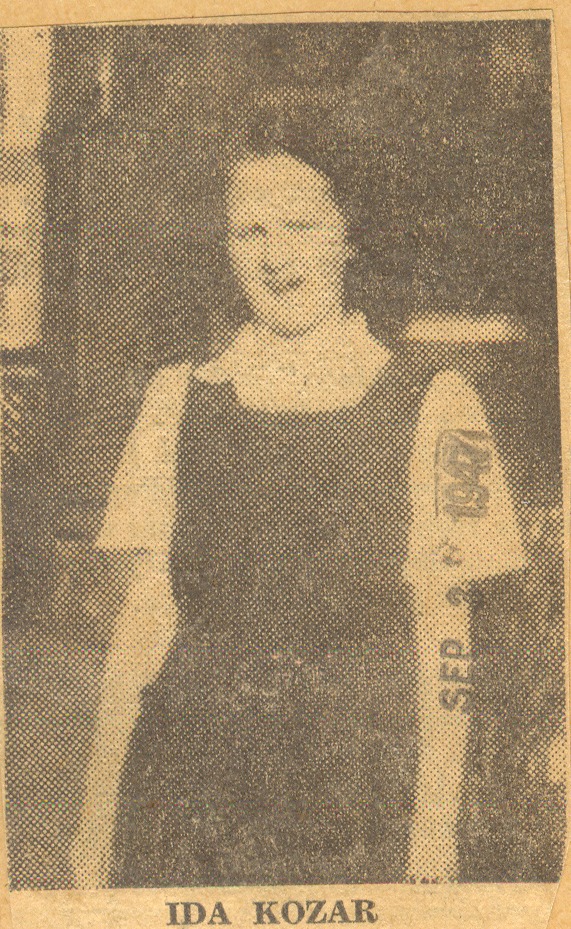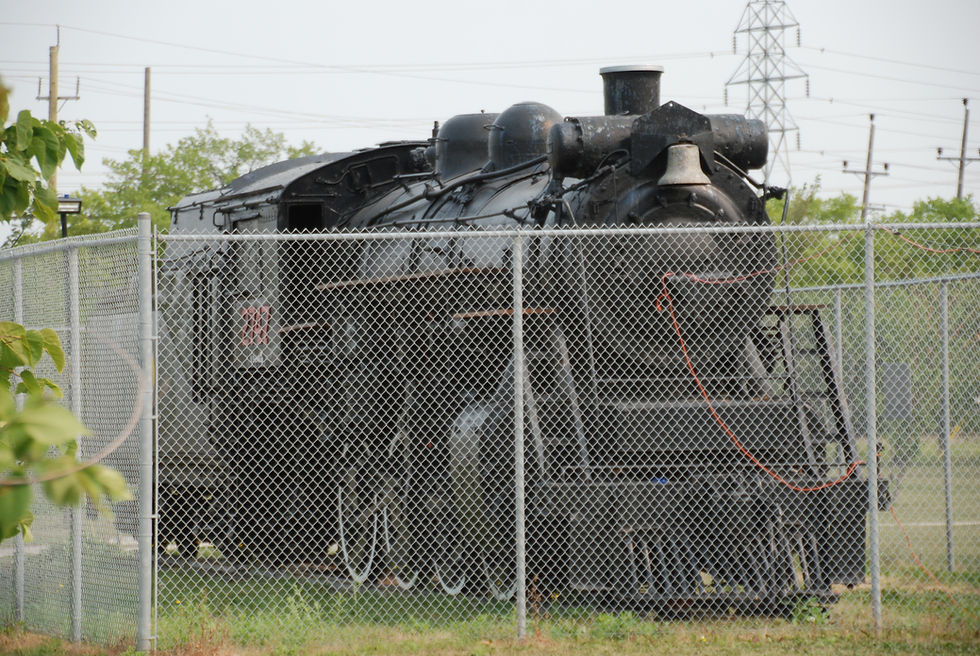The Dugald Train Disaster
- Sep 1, 2017
- 4 min read
Updated: Aug 30, 2023
On the night of Monday, 1 September 1947 at 9:44 PM, one of the worst railway disasters in Canadian history took place in the small village of Dugald, MB. The tragedy would claim the lives of 31 people and injure another 81 victims...
The Scene
The CNR Minaki Camper’s Special 6001 passenger train was on its way back to Winnipeg from cottage country. Travelling at full-speed on what was believed to be a clear track, the Minaki Special came around the ‘S’ curve east of Dugald. A short distance ahead, the No. 6046 eastbound Continental Limited No. 4 passenger train was stopped on the mainline track at the Dugald Station, where it waited for the Minaki Special to take the siding.
Approaching quickly on the main track, the Minaki Special came into Dugald, where it unexpectedly and unfortunately crashed head-on into the Continental Limited.

The Collision and Fire
Immediately upon impact, the locomotives crumpled and fused together. Steam hissed high into the air as it escaped. Flames spread quickly to the old wooden coaches of the Minaki Special that were illuminated with gas lights. A spectacular fire that lit the prairie sky for miles around resulted when the gas containers erupted. The new Ogilvie grain elevator and an Imperial Oil depot at the side of the tracks were also destroyed.
The people of Dugald were the first to arrive at the chaotic scene of the disaster. Everyone was involved in the rescue effort as they worked feverishly to rescue passengers and tend to victims. There were many heroes that night. Signs were used for stretchers and farmers used grain trucks to take people to the hospital until ambulances arrived. Soon many fire trucks and police cars descended on the scene. The wailing sound of sirens was heard long into the night.
With the exception of the engineer and fireman of the Minaki Special, who were killed by the initial collision, the fatalities of this incident were caused by the fire. No fatalities occurred in the Minaki Special's two rear cars or on the Continental Limited.
When it happened, the magnitude of the Dugald Train Disaster was so enormous that it was reported in all the Manitoba newspapers, as well as in the 15 September 1947 issue of TIME magazine. Newspapers in at least twenty U.S. states reported on the events. In the days that followed, details of the disaster were reported locally in the Winnipeg Free Press, Winnipeg Tribune, and Transcona and Eastern Manitoba News.
Victims of the Disaster
News of the tragedy spread to the nearby railway town of Transcona, on to St. Boniface and Winnipeg, and back to Minaki and Malachi. As people fearfully waited to hear what happened, the names of missing passengers - including children and the railway crew on the Minaki Special - began to circulate.
Bodies of the victims, their remains and personal items were brought to Cook’s Funeral Home in Transcona where anxious relatives came to identify something that belonged to loved ones. Of the 31 people that perished, only seven could be positively identified and given private funeral services. The remains and souls of the unidentified victims were laid to rest in a mass grave in Brookside Cemetery.

Memorials
A stone monument in Brookside Cemetery marks the mass grave of the unidentified victims. There is also a heritage plaque that details the events of the disaster nearby. The final resting places of the identified victims that received a private burial are marked with personalized headstones.
In August 1950, a cairn was erected on Memorial Island at Malachi, ON where some of the cottagers had their summer homes. On 1 September 2007, the Springfield Women’s Institute unveiled a monument at Dugald in the presence of area residents, family members, and survivors in commemoration of the 60th anniversary.

What Happened?
An inquiry into the disaster was held and the report, completed by 18 October 1947, had several important conclusions and recommendations:
The signal system at Dugald was problematic - a fact which was observed by engineers and trainmen prior to the accident. The order board at Dugald was routinely used by westbound trains as clearance to enter the Dugald Yard on the mainline if no train was visible in front of the station. However, it was only supposed to signal clearance to the block west of Dugald. The written train order was in effect to the west end of the Dugald yard.
Two very important operating rules were not observed at Dugald by the Minaki Special. The first was that the Minaki Special failed to take the siding track at Dugald as specified on the written train order. The Continental Limited had rights to the mainline. The second was that the Minaki Special was travelling too fast - it should have travelled slow enough to stop within its field of vision. Instead, it was travelling 30 mph as it entered the yard on the curved track.
The wooden coaches used by the Minaki Special contributed greatly to the disaster. Sandwiched between the locomotive at the front of the train and two steel coaches at the end of the train, they were forced off the track by the weight at each end of the train. The CNR was in the process of phasing out wooden coaches at the time, but they were still in active use. After the crash new rules were introduced which required that if wooden coaches were used they were to be at the end of the train.
The gaslighting in the wooden coaches caused the fire, which was the most destructive part of the accident. Electric lighting was deemed safer and it was recommended that it be phased in more quickly.
Many years on...
The Dugald Train Disaster still deeply touches the lives of people connected to what is still regarded as one of the worst railway disasters in Canadian history. We continue to honour the lives lost, their families, and all connected to the tragic event.
To learn more about the Dugald Train Disaster, please visit the Transcona Museum as we have a video - History Television's "Disasters of the Century: Minaki Train Crash" - available for public viewing.
Sources
"Historic Sites of Manitoba: Dugald Train Disaster Monument (Dugald, RM of Springfield)". Manitoba Historical Society. Accessed 30 August 2017.
"MHS Resources: The Dugald Train Disaster, 1947". Manitoba Historical Society. Accessed 30 August 2017.
Transcona Museum Archives.
























































Comments